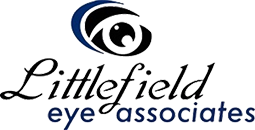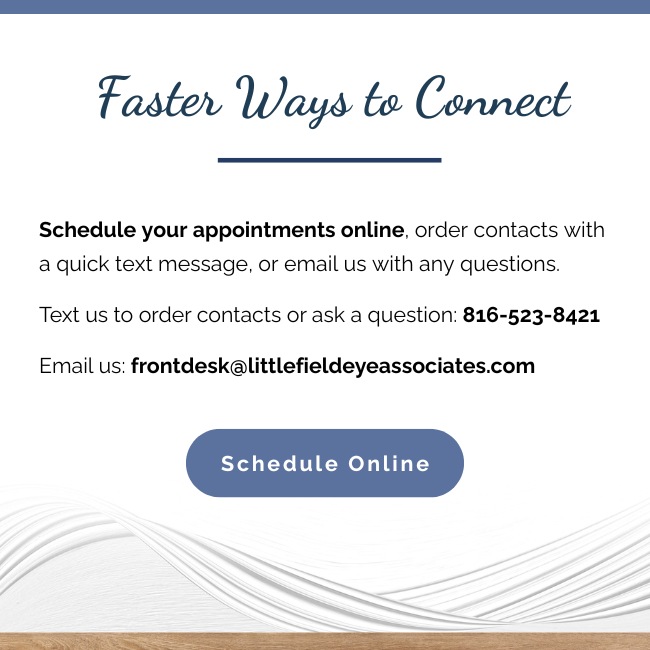It’s no secret that clear vision is crucial for navigating daily life, especially for children who are experiencing the world for the first time. Myopia, or nearsightedness, is becoming more common, and many parents find themselves wondering how it could impact their child’s visual health over time. While myopia itself does not directly cause blindness, untreated myopia can lead to serious eye conditions that may result in permanent vision loss.
By understanding what myopia is and how to manage it effectively, parents can take proactive steps to protect their children’s eyesight and support a brighter future for their vision.
What is Myopia & Why Does it Happen?
At its core, myopia is a refractive error of the eye. This occurs when the eye’s shape causes light to focus in front of the retina rather than directly on it. The result is clear vision for nearby objects but blurry vision for distant ones.
Myopia often develops because the eyeball is too long or the cornea has too much curvature. It’s a condition that usually begins in childhood and may worsen through adolescence, especially if left unaddressed.
Factors That Contribute to Myopia
Several factors increase the chances of developing myopia. Genetics plays a significant role; if one or both parents are nearsighted, their children are more likely to have myopia as well.
Environmental and lifestyle factors also contribute, including prolonged time spent on near tasks such as reading or using digital screens. Spending limited time outdoors further increases the risk, since natural light and looking at distant objects help protect against myopia progression.
How to Spot Myopia Early
Since myopia worsens over time, recognizing the signs early is crucial to managing the condition effectively. If your child exhibits any of the following symptoms, it might be time to schedule an eye exam:
- Difficulty seeing things far away, like a whiteboard at school
- Frequent headaches
- Squinting or eye strain
- Holding books, screens, or other objects unusually close to the face
- Shortened attention span or poor academic performance
- Complaints about blurry vision when looking at distant objects
The earlier you detect myopia, the better equipped you’ll be to manage and slow its progression.
High Myopia & the Risks You Should Know
When myopia progresses to high myopia (defined as a refractive error of -5.00 diopters or more), the stakes can become significantly higher. High myopia isn’t just an inconvenience; it puts your child’s eyes at greater risk for serious complications that can permanently impact vision without prompt intervention.
High myopia is associated with several eye conditions that, over time, can lead to severe vision problems:
- Retinal detachment occurs when the retina separates from the back of the eye. This is a medical emergency that requires immediate attention to prevent irreversible vision loss.
- Glaucoma results from increased pressure within the eye, which can damage the optic nerve and cause progressive vision loss.
- Cataracts develop when the lens becomes cloudy, impairing vision and potentially leading to blindness if left untreated.
Some of these conditions could cause blindness, and it may all lead back to untreated myopia. That’s why eye exams and myopia management are so important, particularly for children who develop high myopia at a young age.
Steps to Manage Myopia Effectively
Although myopia itself cannot be cured, several interventions can help slow its progression and reduce the associated risks.
Corrective Lenses
Eyeglasses and contact lenses remain the most accessible and widely used tools for treating myopia. These lenses help light focus correctly on the retina, providing clear vision for distant objects.
While traditional lenses can correct blurry vision, specialized myopia control lenses, available in both glasses and contact lens options, are also designed to slow eye growth and therefore reduce myopia progression.
MiSight® 1 day Contact Lenses
MiSight® 1 day lenses are the first and only FDA-approved soft contact lenses specifically designed to slow myopia progression in children aged 8–12 at the start of treatment. These daily disposable lenses provide clear vision while simultaneously delivering a treatment effect that helps manage eye growth.
MiSight lenses are comfortable, safe, and convenient—making them an ideal option for young patients and busy families. Studies show that MiSight lenses can reduce myopia progression by up to 59% over 3 years, giving children a better chance at long-term eye health and reducing their risk of developing severe myopia-related complications later in life.
Orthokeratology (Ortho-K)
Ortho-k offers a non-invasive and temporary way to improve vision. This method involves wearing specially designed contact lenses overnight to reshape the cornea. During the day, children can enjoy clear vision without glasses or daytime contact lenses. Ortho-k is particularly effective for managing myopia in children.
Atropine Eye Drops
Low-dose atropine eye drops target the root cause of myopia by slowing the elongation of the eyeball. These drops are typically well-tolerated, with few side effects, and are considered a reliable option for children experiencing rapid myopia progression.
Can Myopia Be Prevented?
While some factors contributing to myopia, like genetics, are outside your control, other risks can be minimized through conscious effort and routine care. Encourage your child to spend more time outdoors, reduce the use of digital screens, and take regular breaks during near work to relieve eye strain. Creating an eye-friendly environment at home is another proactive step that can make a meaningful difference.
Clearer Vision for the Future
Your child’s vision is one of their most valuable assets, and managing myopia today can set them up for a lifetime of healthy sight. Early detection, combined with effective management strategies like MiSight lenses, ortho-k, or atropine eye drops, can make a world of difference in preventing complications from high myopia.
If you’re concerned about myopia or want to explore preventive options, now is the time to act. Book an appointment with Littlefield Eye Associates today to give your child the gift of clearer, healthier vision. With dedicated care and a personalized approach, we’re here to support their eye health every step of the way.





